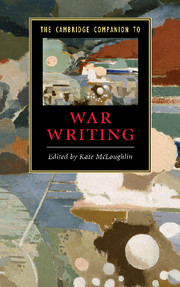3 - People in war
from Part I - Themes
Published online by Cambridge University Press: 28 January 2010
Summary
Billy was preposterous - six feet and three inches tall, with a chest and shoulders like a box of kitchen matches. He had no helmet, no overcoat, no weapon, and no boots . . . He didn't look like a soldier at all. He looked like a filthy flamingo.
Kurt Vonnegut, Slaughterhouse-Five (1969)What does it mean to fight in a war? What constitutes a soldier, a civilian, a victim, an aggressor? How do wars change populations and individuals, in an instant and over the course of many years? How does war define a generation or a community? What, in short, does war do to people? Such questions about the profound human consequences of war have always been at the core of war writing, from the Iliad (c.750 BCE) to War and Peace (1865-69) to Slaughterhouse-Five. Homer, inaugurating the western epic tradition, imagined superlative men-of-war whose very essence was forged in the crucible of combat. Only war could test and develop what men valued above all else - honor, bravery, masculinity, leadership, and what we might describe as sheer power. Leo Tolstoy, melding his understanding of war into the formal and ethical demands of the emergent novel, figured combatant and civilian life in an ongoing mutual tension, as the long war ebbs and flows over the novel's life-span, simultaneously changing everything and changing nothing for its aristocratic characters. And in Billy Pilgrim, the unlikely protagonist of Slaughterhouse-Five, Kurt Vonnegut created an everyman whose absurdity as a warrior ironizes and destabilizes the very category of soldier. In Vonnegut's interplanetary universe, war takes people as they already are - deeply flawed, fully unheroic, brutally savage, at times strangely beautiful - and sweeps them into its destructive vortex. Slaughterhouse-Five thus epitomizes what the twentieth century, perhaps for the first time in history, often concluded about war and people: in the face of the former, the latter resemble matchstick figures. They look pathetic, vulnerable, negligible.
- Type
- Chapter
- Information
- The Cambridge Companion to War Writing , pp. 25 - 37Publisher: Cambridge University PressPrint publication year: 2009
- 7
- Cited by

